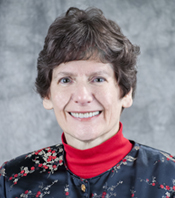Texas A&M awarded grant to help reduce chronic diseases, promote healthier lifestyles – First-year funding will go mainly to program efforts in South Texas


The Texas A&M AgriLife Extension Service has been awarded a “Programs to Reduce Obesity in High-Obesity Areas” grant to support national efforts by the U.S. Department of Health and Human Services to reduce chronic diseases, promote healthier lifestyles, reduce health disparities and control health care spending. Working with the Texas A&M Health Science Center School of Public Health, Texas A&M AgriLife received $783,000 for the first year of a three-year grant focused on improving access to healthy foods, as well as safe and convenient locations for physical activity within targeted communities in Hidalgo County.
According to Health and Human Services, $4.6 million in new grants is being awarded to six land-grant universities in states with counties having a greater than 40 percent prevalence of adult obesity.
The initiative is important because data shows chronic diseases in the U.S. such as heart disease, cancer and diabetes are the leading causes of death, disability and health care costs. They account for seven of 10 deaths among Americans each year and more than 80 percent of the $2.7 trillion the nation spends annually on medical care.
“This grant will be administered by the Centers for Disease Control and Prevention, and much of the initial funding will be used to establish a Working on Wellness/Trabajando en el Bienestar community-based program to address obesity in Hidalgo County,” said Dr. Carol Rice, AgriLife Extension health specialist and program leader and co-principal investigator for the program, located in College Station. “Hidalgo County was selected for the project because CDC has determined that more than 40 percent of the county’s 800,000 residents are obese.”

“The program is a partnership between AgriLife Extension and the Texas A&M Health Science Center, combining the skills and expertise of both organizations to help solve a problem,” said Dr. Marcia Ory, regents and distinguished professor at the Texas A&M School of Public Health in College Station and co-principal investigator.
“Both entities have ‘boots on the ground’ in Hidalgo County, where we have a campus in South Texas and AgriLife Extension county agents are available to collaborate on the program,” Ory said. “Our Center for Community Health Development’s National Community Health Worker Training Center enables us to reach the most underserved communities using approaches that are culturally appropriate.”
“Working with community coalitions, we will select high-need communities within Hidalgo County for intensive intervention,” Rice said. “Utilizing a community-based approach, assessments will be conducted and proposed strategies for addressing high rates of obesity will be discussed with community stakeholders. This program should have a major impact throughout the county, not just specific high-need communities.”
Ory said the team will begin with an evaluation of current assets in the community and identified needs. She stresses the value in increasing knowledge of healthy behaviors, promoting greater collaboration with health-oriented community groups and increasing community-wide practices to promote the availability of both healthy foods and safe areas for physical activity.
Rice and Ory said they plan to work with schools, neighborhoods, partnering agencies and local government entities to identify and implement strategies that help improve access to healthier foods and increase opportunities for people to be physically active.
In addition to current AgriLife Extension programs that are teaching people how to grow their own food, they hope to increase access to food by working with city and county government entities to recruit new food retail outlets. The Texas A&M Health Science Center campus has extensive contacts with county public health officials and community stakeholders that can be immediately mobilized towards this effort.
Program strategies to increase access to physical activity will include locating neighborhood parks, playgrounds or other suitable areas that could be improved, rebuilt or made safer for those in high-need communities.
“We’ll work with communities to identify parks that we can help them reclaim through community policing and neighborhood efforts, as well as possibly adding lights, benches and trees to produce a more comfortable and fun environment in which residents can be physically active,” Ory said.
The two said meeting the goals of this combined effort will help to lower obesity rates and reduce instances of chronic disease, resulting in a healthier Hidalgo County for current and future generations.
Media contact: media@tamu.edu


